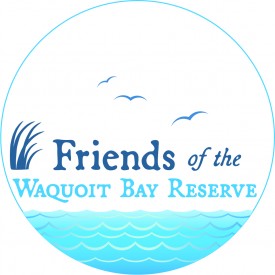Bringing Wetlands to Market
Coastal wetlands provide critical ecosystem services. While it is well known that forests store large amounts of carbon from greenhouse gases (including carbon dioxide, nitrous oxide, and methane), research indicates that coastal wetlands might capture and store carbon at rates three to five times greater than forests. Research also suggests that nitrogen pollution from septic systems, stormwater runoff, and airborne pollution can significantly compromise a wetland’s ability to store carbon. Wetlands’ ability to absorb and store tremendous amounts of blue carbon has received increased attention from policymakers, researchers, and educators in communities, state and federal agencies, and organizations in New England and beyond. Until recently, blue carbon storage has been a largely theoretical concept, but end users are expressing more interest in the practical applications of this relatively new concept.
What We’ve Learned
What is Coastal Blue Carbon?
Coastal Blue Carbon refers to the climate change mitigation benefits offered by the improved management through conservation and restoration of biogeochemical processes performed by coastal wetlands, including salt marsh, mangroves, seagrasses, and other tidal wetlands. Coastal blue carbon is the newly recognized ecosystem service value of climate mitigation, and as such can provide a new incentive to prioritize the restoration and conservation of these coastal ecosystems.These habitats provide important ecosystem services, such as habitat for fish, wildlife, and sensitive species; storm and flood protection; improved water quality; and jobs and economic benefits. Maintaining these functions is critical to supporting coastal ecologies and communities. These services provide an important component to support adaptation to climate change and protection of coastal communities.On a per-acre basis, coastal habitat restoration and conservation can provide among the greatest climate benefits compared to forest or other land use projects (Costanza et al. 1997).
Project Videos
Bringing Wetlands to Market Project Overview Video
Learn about this project in the first in a series video on Bringing Wetlands to Market: Nitrogen and Coastal Blue Carbon
Collaboration Video
Learn how this project is leveraging collaboration to ensure that the science is useful to coastal decision-makers.
Tools Video
Learn more about the tools that we are developing through the Bringing Wetlands to Market project.
Blue Carbon Video
An introduction to market and non-market applications for Blue Carbon. Click here to view the video.
Visit our YouTube Channel to view Project Videos





